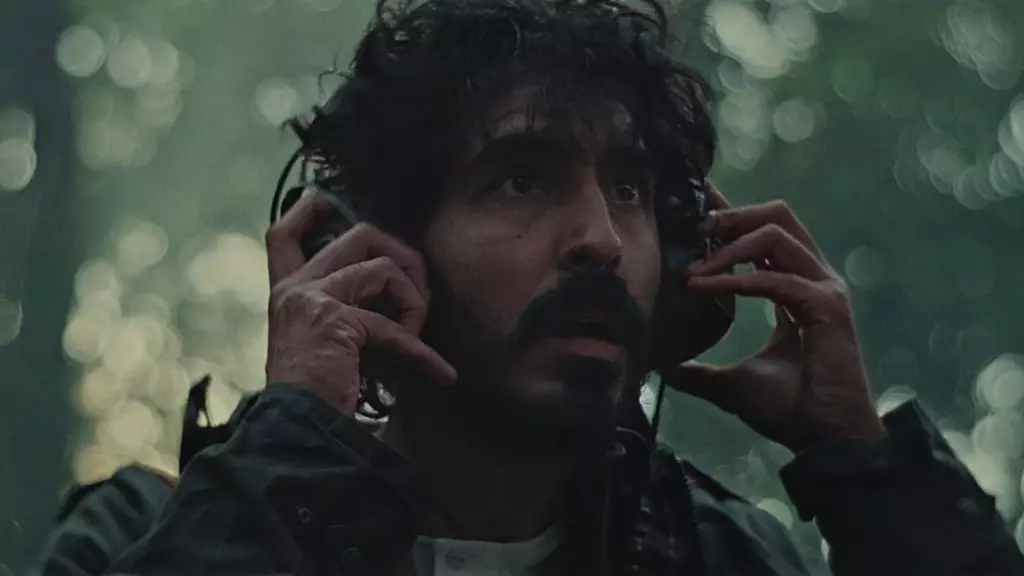Bryn Chaney’s debut feature, *Rabbit Trap*, offers an intriguing blend of Celtic folklore and sound design that delves into complexities of artistry and human introspection. Set against the backdrop of the Welsh countryside in 1973, the film follows a musical couple, Darcy and Daphne, portrayed by Dev Patel and Rosy McEwen. Their getaway to a secluded cabin carries the intention of rejuvenating their creative energies, but it quickly unEarths both external and internal darkness. This narrative does not merely scrape the surface; it digs deep into themes of connection, despair, and the supernatural, showcased through sounds that haunt the body and mind.
One of the striking elements of *Rabbit Trap* is its commitment to sound as an expressive medium. Darcy, a sound artist, uses field recordings to capture the essence of the world around him, which he inadvertently transforms into a conduit for mystical energies. The film posits that sound is more than a sensory experience; it is portrayed as an entity with its own haunting presence. One line, which suggests that “sound is a ghost, and your body is the house it haunts,” captures the essence of this philosophy.
What strikes the viewer is how accurately Chaney employs sound not only as a tool for storytelling but also as a psychological barrier that separates the characters from each other and from their core selves. The ambient noises—water dripping, metal clanging, grass crunching—create an immersive atmosphere that gnaws at the subconscious, enhancing the film’s unsettling vibe.
At the heart of this story is the dynamic relationship between Darcy and Daphne. Their artistic struggles reflect their emotional turbulence. The mutual desire to harness the captured sounds leads them to a euphoric yet terrifying creative breakthrough. However, the film deftly handles the complexity of their bond—while they experience artistic excitement, they also face underlying fears and trauma.
Darcy’s battle with sleep paralysis adds a layer of psychological distress. His nightmares manifest in alarming ways, revealing harsh truths that he is unable to face during his waking life. In contrast, Daphne becomes an unsuspecting audience to her partner’s subconscious, recording his incoherent whispers during these episodes. Here, sound embodies both connection and alienation; it serves as a bridge and a chasm.
The film captures an exhilarating yet troubling passion during intimate moments, using sound to elevate these experiences to a cosmic plane. As Daphne becomes enraptured by Darcy’s recordings, she finds herself at a crossroads, balancing her artistic expression against the lurking darkness that threatens to consume them both.
An enigmatic child, played by Jade Croot, enters the couple’s lives, offering both companionship and foreboding. His fascination with their music serves as a metaphor for the innocence of creativity, yet his propensity for folklore casts a long shadow over their idyllic existence. Croot’s performance is remarkable; he navigates innocence and eeriness that enhances the emotional landscape for both Darcy and Daphne.
This child’s presence unravels layers of trauma within Darcy, ultimately serving as a catalyst for change. As the trio interacts, the viewer feels the tension of impending dread; their nurturing relationship must confront the darkness that emerges from Darcy’s psyche. This dynamic illustrates how external influences can either anchor or destabilize creative identities.
A Cinematic Journey with an Emotional Core
Bryn Chaney’s *Rabbit Trap* is an impressive debut that respects the traditions of storytelling while boldly venturing into the experimental realm. The film is not merely a psychological depiction of its protagonists; it is an exploration of art’s transformative capabilities. The multi-hyphenate nature of the lead actor, Dev Patel, is matched by the film’s rich narrative tapestry, establishing Chaney as a formidable emerging talent in cinema.
Sound, in *Rabbit Trap*, transcends a mere cinematic tool; it becomes a character in its own right, reflecting the tumultuous journey towards understanding the self. What unfolds is an unsettling yet absorbing reflection of how creativity can both liberate and ensnare the human spirit. As audiences are engulfed in its haunting soundscape, they are compelled to question their own understanding of creativity, fear, and connection.

Leave a Reply